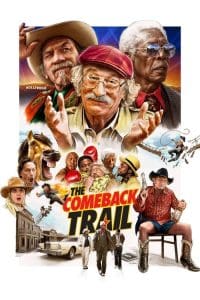Killer Joe Film Review – What’s It All About?
Let’s dive into Killer Joe, a 2011 Southern gothic black comedy crime thriller directed by William Friedkin and starring Matthew McConaughey, Emile Hirsch
, Juno Temple, Thomas Haden Church, and Gina Gershon.
This Killer Joe film review covers everything from twisted family values to scenes that will have you questioning your relationship with fast food forever.
So, what’s the deal? A broke drug dealer hires a hitman to murder his own mother for insurance money. It all kicks off when Chris (Emile Hirsch) finds himself in debt to some people who don’t exactly do friendly payment reminders. Naturally, things don’t go quite to plan—unless your plan included seduction, betrayal, and a very disturbing dinner scene.
The story follows Chris, who’s about as reliable as a wet paper bag in a hurricane. He ropes in his slow-witted father Ansel (Thomas Haden Church) and stepmother Sharla (Gina Gershon) into a scheme that involves hiring the mysterious Joe Cooper, a detective who moonlights as a contract killer. Joe demands an upfront fee, which the Smith family can’t afford. So, instead, they offer up Chris’s teenage sister Dottie (Juno Temple) as a sort of down payment. Because nothing says “family values” like offering up your sibling to a sociopath.
The Cast – Who’s Bringing It?
Matthew McConaughey absolutely nails it as Joe Cooper—cold, calculating, and disturbingly polite. He’s not your average hitman. He says “sir” and “ma’am,” and he wears a white cowboy hat so pristine it could blind a man at dawn. But make no mistake, Joe is terrifying. This is not your charming rom-com McConaughey. This is McConaughey unhinged, and it’s glorious.
Emile Hirsch as Chris is the embodiment of chaotic failure. He’s twitchy, desperate, and prone to making the worst possible decision at every turn. Thomas Haden Church brings a deadpan brilliance to Ansel, who’s so clueless he makes Homer Simpson look like a Mensa member.
But it’s Juno Temple who quietly steals the show as Dottie. Her wide-eyed innocence is either a mask or a tragic reality—you’re never quite sure. And Gina Gershon? She deserves a bravery award for her role, especially during a dinner scene that’ll haunt you more than your student loan debt.
Chemistry? Absolutely. Dysfunctional family energy? Off the charts.
Direction & Themes – What’s It Really Saying?
Under William Friedkin’s direction, this isn’t just a gritty crime tale—it’s a pressure cooker of Southern discomfort. Best known for *The Exorcist* and *The French Connection*, Friedkin dives headfirst into the trailer-trash noir vibe and doesn’t flinch. He lingers on awkward pauses, allows silence to thicken like gravy, and never backs away from uncomfortable moments.
The film explores themes of desperation, exploitation, and twisted morality. There’s also a not-so-subtle commentary on American capitalism and the breakdown of the nuclear family. Everything—every dollar, every act of violence—is transactional. Love? Loyalty? Those are negotiable.
And yes, metaphors abound. Joe’s white hat? A perverse take on the cowboy-as-hero trope. Dottie’s childlike behavior? Maybe a stand-in for innocence lost. Even the fried chicken becomes a symbol of control, submission, and (we wish we were joking) power dynamics.
The Look & Sound – Pretty, Sad, or Both?
Visually, Killer Joe is grimy in all the right ways. Friedkin and cinematographer Caleb Deschanel capture the sweat-soaked humidity of Texas life with unflinching detail. You can practically smell the moldy carpet and stale cigarette smoke. Trailers, diners, strip clubs—it’s a bleak Americana tour.
The sound design is equally sharp. The score creeps in at key moments but mostly lets the tension breathe. Ambient sounds—TV static, footsteps, awkward chewing—do the heavy lifting. When the silence hits, it’s deafening.
If you’ve ever felt emotionally destroyed by a scene that takes place entirely at a kitchen table—this one’s for you.
Did You Know? Behind the Scenes
Did you know? *Killer Joe* is based on a stage play by Tracy Letts, who also wrote the screenplay. The film maintains that claustrophobic, theatrical feel—with long scenes set in cramped spaces, and dialogue that sizzles like bacon in a pan.
The film premiered at the Venice Film Festival and immediately stirred controversy due to its graphic content. It received an NC-17 rating in the U.S.—which basically screams, “Viewer discretion? More like viewer distress.”
Also, the now-infamous fried chicken scene? Gina Gershon performed it in one take. No doubles. No prep. Just raw commitment and a chicken leg that should’ve gotten its own credit.
Read more here.
Final Thoughts – Worth Watching?
If you’re after explosions or plot twists every five minutes, this might not be your jam. But if you’re up for something that sticks with you, this one delivers.
It’s tender, it’s tough, and it doesn’t spoon-feed you. Basically, it’s storytelling for grown-ups—with actual feelings and everything.














